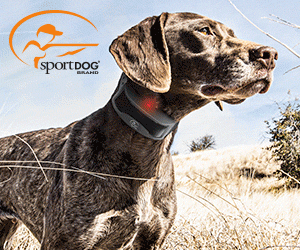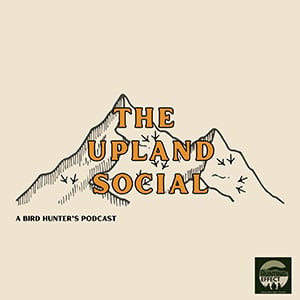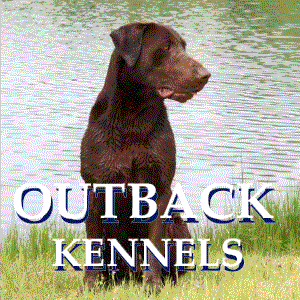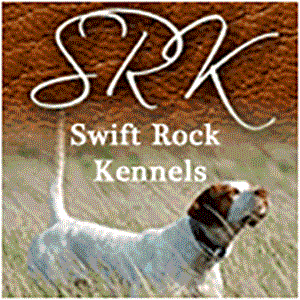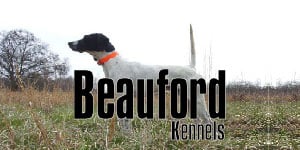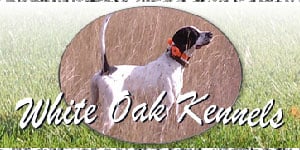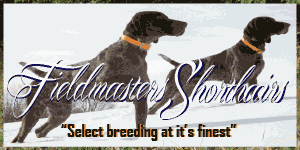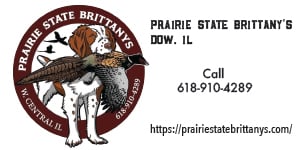Tall Timbers: Burning Down the House
Though rain and sunshine, sleet and snow, wherever quail are, these dogs gotta go. And go they did right up until the National Champion was announced on February 27, 2025. Erin’s Perfect Storm, call name Colt, is a five-year old white, orange, and ticked pointer male, that is owned by Brad Woodie. Colt was handled by Luke Eisenhart, and Judd Carlton was the scout. A huge congratulations goes to all.
There’s always chatter about the dogs, but this year a lot of talk centered around the unique partnership between Ames Plantation and Tall Timbers, the stewards of wildlife and wildlands. The relationship that was announced at the beginning of the year has many goals in its scope of work, but its number one objective is simple: to restore wild quail to the hallowed Ames Plantation field trial grounds. The work has already begun.

While the National was first organized and run in 1896 near West Point, Mississippi, it was moved to Hobart Ames’ Grand Junction plantation in 1915 where it’s been ever since. Ames, the heir to the Ames Shovel Company that was founded in the 1770s in Eastern Massachusetts, bought his Grand Junction plantation in 1901. His mixed-use goals combined business with pleasure, and he focused on creating champion Angus cattle, the farming of cotton and other row crops, and creating a world-class hunting preserve so he could develop and run his string of bird dogs. For a century, it all worked flawlessly. Ames imported cattle from Scotland, and their grazing created a constant supply of young, warm-weather grasses. He raised row crops and cotton in the best soil and planted wheat as quail feed. Land managers rotated fields in keeping with proven farming practices, and for a century there was peace in the kingdom. Quail flew everywhere.
But times change, and by 1999, the modern world caught up with Ames Plantation. In September of that year, bobwhite density on the morning field trial course was estimated to be 1 quail per 1.54 acres. Survival between mid-September and mid-December in that year dropped to a poor 57% survival rate. That means about four of every 10 birds died, causing the quail per acre count to drop to 1 bird for every 2.7 acres. Add to it that 52% of the 5,000-acre field trial course was closed canopy hardwoods with little herbaceous and shrubby groundcover, and the quail didn’t stand a chance. The quick solution? Supplement wild birds with those raised in captivity.
How did that work for these bird dogs that represent the best of the best? Let’s use Colt’s finds as an example. Colt ran in the morning brace on the first day of the championship, and had finds at the following times:
• a find at :11
• a divided find at :46
• a find at 1:06
• a find at 1:57
• a find at 2:00
• a find at 2:19
• a find 2:37
Colt’s win in the highly competitive bird dog event was 6.5 bird contacts in three-hours. That’s an average of about a find about every 27 minutes.
It’s tempting to beat the Good Ol’ Days drum pretty hard, but here’s a little context from Hall of Famer Harold Ray. “I arrived in Georgia in 1958 and started training dogs for Fred Beven,” Ray said. “In 1964 I began working for Elwin and Inez Smith of Smith Setters. Developing a kennel of good dogs meant I needed places to run them, and it was all around us. Back then there was so much farmland that the average hunter on public land easily could find lots of birds. During a low cycle I’d find about 20 coveys per day but in an average year it’d be common to find 50 coveys per day. The number of quail helped me develop high-quality dogs like CH Tomoka, CH The Performer, CH Destinare and CH Bonafide who are honored in the Sporting Dog Hall of Fame. Those dogs sired a lot of pups, and their bloodlines have contributed to enhancing the breed which is what it’s all about. It’s one reason why a lot of hunters today have great dogs.
“I remember running in the Masters Classic with 9CH Bonafide. I was handling him but he was owned by one of Mr. Smith’s friends, Dr. Ted and Edna Morgan. Ronnie Smith’s Fabricator was the brace mate, and in one hour of running, Ronnie and I found 26 coveys. Bonafide had one more find and won, but that shows folks what the peak quail days were like. I remember running dogs on Wade Plantation with John Rex Gates and we found 120 coveys in a single day.”
More math? This one is simple. If 26 coveys were found in an hour ‘back in the day’ then in Colt’s three-hour tour he’d have found 78 coveys. We’ve proved two things. First, there is a big difference in bird numbers, and second, even writers can do basic math.

The dramatic difference in those numbers is what underscores the monumental importance of this partnership. According to Matt Backus, the Director of the Ames AgResearch and Education Center, “the National Championship needs to have wild birds. The Ames Family bequeathed 18,000 acres to the University of Tennessee to focus on continued development of our Angus beef herd, to the studies of row crops, soil, and other agricultural complexities, and for the running of our sport’s elite event, the National Championship. Everything is working great with the exception of having field trial grounds that support wild quail for the marquee event which is why we’re thrilled with the Tall Timbers’ partnership. Think about this; after a day of running the best bird dogs in the country, wouldn’t it be great to listen to quail whistling and gathering up for the night? That’s our collective goal, and we’re excited to see what we can do.”

Backus will work with Alex Jackson, Tall Timbers’ Quail Expansion Biologist, who already is underway with an initial action plan. “Our agreement with Ames Plantation is for five-years,” he said. “While that may seem like a long time, it’s very short with regards to habitat improvements. Our overarching goal is to have one wild quail per acre on both the morning course and the afternoon course. For year one, we’ll stop releasing birds on the afternoon course and liberate them only on the morning course. Habitat work will begin, and as 52% of the 5,000-acre field trial grounds are what we consider to be closed canopy hardwoods we’ll start thinning so as to allow sunlight to reach the ground and promote growth. We’ll do prescribed burns, use herbicides to control undesirable vegetation, and work with the Ames farm staff to convert unproductive crop areas in strategically located fields to promote early successional vegetation. Planting buffer strips and removing overgrown hedgerows combined with disking will help increase the number of arthropods like beetles, grasshoppers, ants and the like. Those bugs provide bobwhite quail chicks with protein that is essential for feather development and growth. There’s much more, but between Matt’s teams and ours we’re making progress every day.”
The late Hall of Famer, John Rex Gates, once told me that, “having lots of birds makes it easy to fall in love with bird dogs. We used to laugh that with so many wild birds an average dog could break themselves. That’s not true of course, every dog needs training. But with so many wild bird contacts the dogs learned how to hunt. They learned the kind of things that make good dogs great. They learned how to work into the wind and how to handle birds they’ve located. Wild birds are different, and dogs learn a heck of a lot more from them than they do from released birds.”

Running champion bird dogs on released birds is sorta like Tom Brady picking apart a Pop Warner league defense. Where is the glory in that? Conservation costs money, and while Tall Timbers has received several generous donations, more is always welcome. John Rex had a funny story about the cost to raise quail, too. “I remember running dogs with Robert Woodruff, the president of Coca-Cola, who also owned Ichauway Plantation,” he had said. “One year, Mr. Woodruff wanted to know how much it cost to harvest a quail. He tasked his accountants with figuring out the costs, and of all birds harvested on his 30,000 acre plantation, the cost came in around $250.
“Well, we won’t be doing that anymore,” Mr. Woodruff said.
“No more hunting?” asked one of his guests.
“No, we’ll keep hunting,” Mr. Woodruff said. “But we’re not going to figure out how much it costs anymore.”
A comparative look at the consumer price index from then until now lands that per quail cost in today’s dollars at $2046.85.

No doubt that when the 127th National Championship kicks off in February 2026 all eyes will be looking for the next top dog. And late in the day, everyone will start to listen. If all goes well, they’ll hear the sound of wild quail whistling to covey up for the night.
Related Aritlces
PHOTO BY EUKANUBA SPORTING DOG
Everyone loves puppies, but not everyone likes dogs. It’s unsurprising that the same holds true in the canine world. Many adult dogs don’t care that much for puppies, and some downright despise them. Making sure that the introduction is successful isn’t just important, it’s critical. That prevailing attitude means introductions to the new member of your string requires some thought and planning. After all, you only get one chance to make a good first impression.
Read Your Dog
Just because a gun dog can’t speak doesn’t mean he’s not saying anything. Reading the dogs’ body language is key for elevating performance levels, so here are some things pro trainers look for when they cut loose their string.






